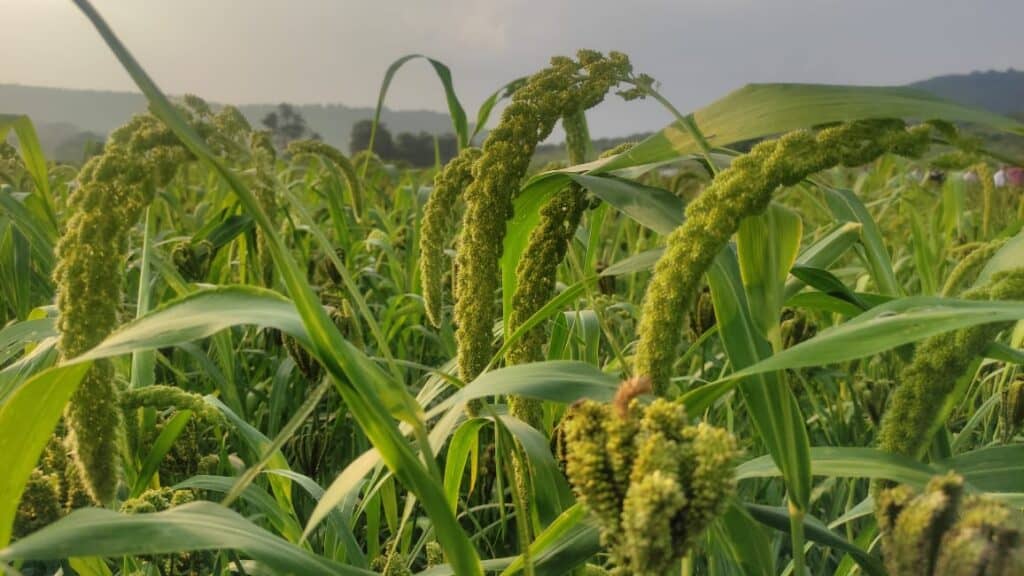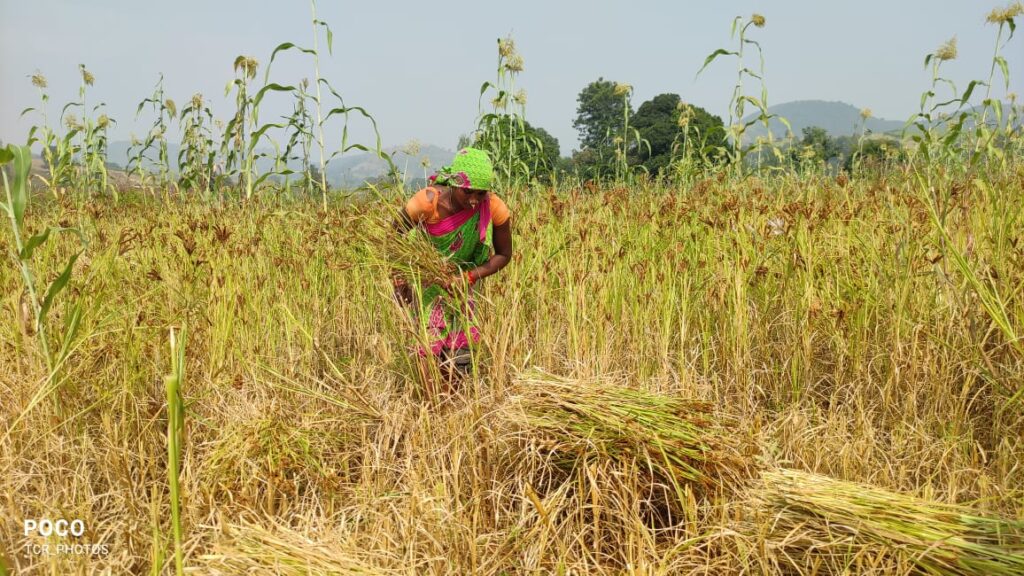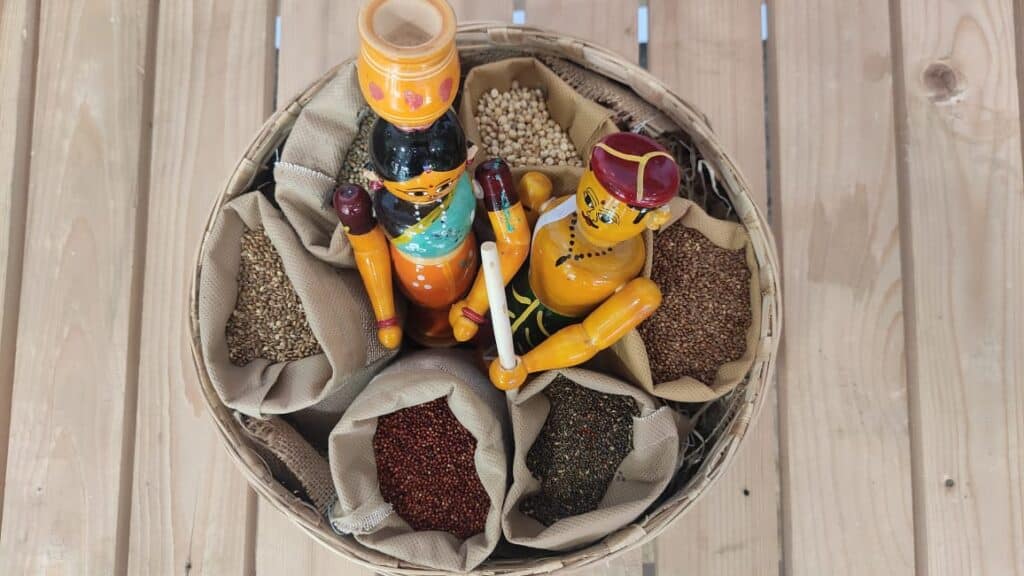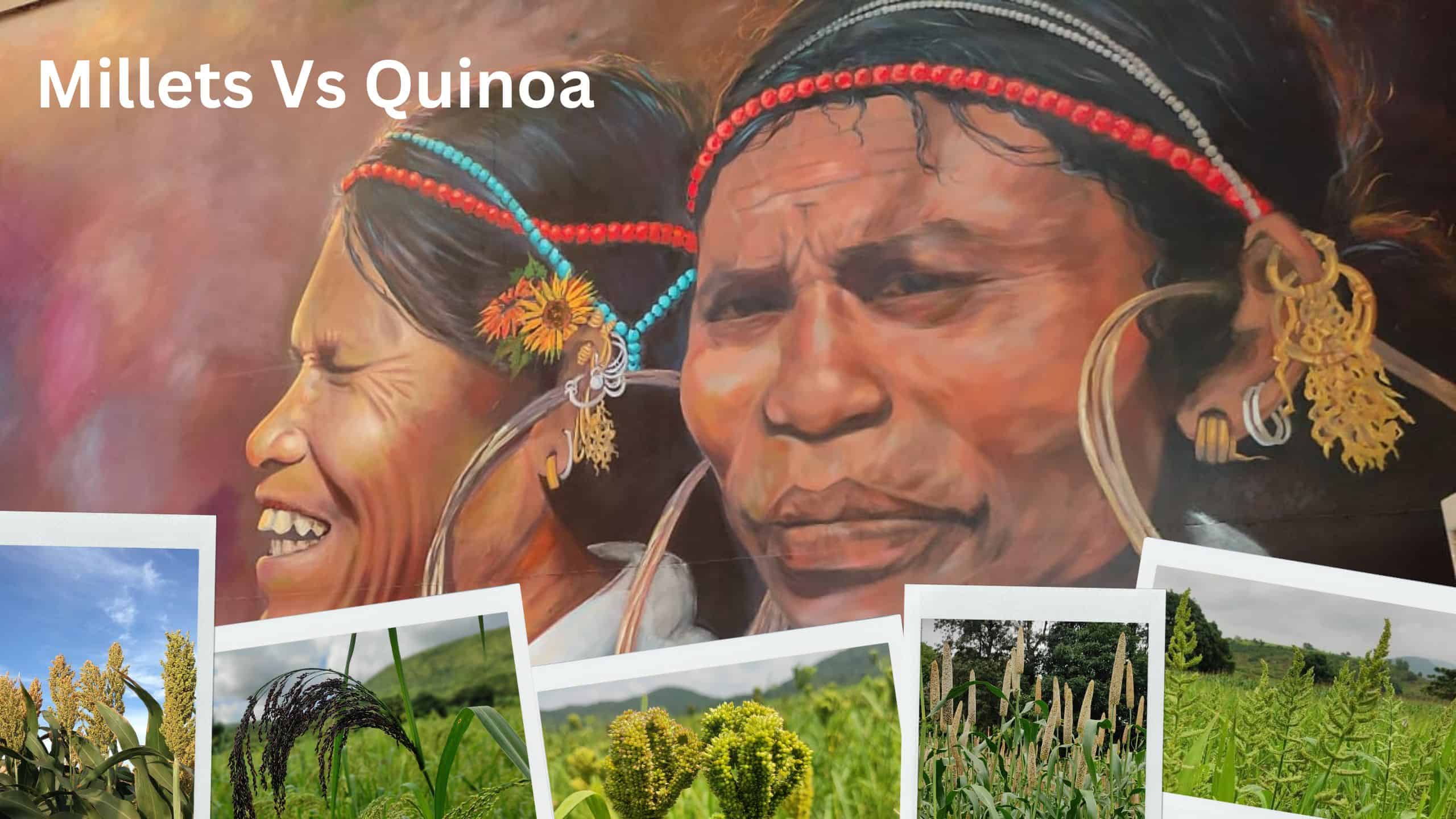Table of Contents
Millet Vs Quinoa:
As people become more conscious of their health and the impact of their food choices on the environment, ancient grains like millets and quinoa are gaining popularity. But which one is better? In this post, we will explore the differences between millet Vs quinoa and help you make an informed choice.
What are Millets?
Millets are a group of small grains that are rich in minerals and vitamins and are gluten-free. They are staple foods for some communities in India but unknown to others. Millets are broadly classified into two categories: major millets and minor millets. Major millets include Pearl Millet (Bajra), Sorghum (Jowar), and Finger Millet (Ragi) while minor millets include Kodo Millet, Barnyard Millet, Little Millet, Proso Millet, Browntop Millet, Foxtail Millet.
They are all loaded with nutrition and are rich in dietary fiber. With growing concerns about the limited nutritional benefits of dominant crops like rice, wheat, and maize, attention has shifted to bringing back ancient and forgotten grains in our daily diet. Millets are more accessible, affordable, and sustainable compared to international pseudo-cereals like quinoa, which is not native to India.
What is Quinoa?
Quinoa, on the other hand, is a grain-like seed that originated in South America. It is also gluten-free and is considered to be a superfood due to its high protein and fiber content. Quinoa is also rich in vitamins and minerals, including iron, magnesium, and calcium.
Quinoa has gained popularity in recent years due to its nutritional benefits and versatility. It can be used in a variety of dishes, including salads, soups, and stir-fries.
Millet Vs Quinoa: Nutritional Comparison
Both millets and quinoa are nutrient-dense and offer several health benefits. However, there are some differences in their nutritional profiles.
Protein Content: Quinoa is higher in protein than millets, containing all nine essential amino acids. This makes quinoa a complete protein source, making it an excellent choice for vegetarians and vegans. Millets are also a good source of protein, but they do not contain all essential amino acids.
Fiber Content: Both millets and quinoa are high in fiber, which is essential for maintaining healthy digestion and preventing constipation.
Mineral Content: Millets are a good source of minerals like iron, magnesium, and calcium. Finger millet (ragi) is particularly high in calcium, with ten times more calcium than other cereal crops. Quinoa is also high in minerals, including iron, magnesium, and calcium.
Glycemic Index: Millets have a low glycemic index, which means they release sugar into the bloodstream slowly, preventing sudden spikes in blood sugar levels. This makes them an excellent choice for people with diabetes or those looking to manage their blood sugar levels. Quinoa also has a low glycemic index, making it a good choice for people with diabetes.
Millet Vs Quinoa: Environmental Impact
One advantage of Millets over Quinoa is their low environmental impact. Millets are a sustainable crop that requires less water and fertilizer than other grains. They are also native to India and have been cultivated there for thousands of years, making them a more traditional and local choice.
Quinoa, on the other hand, is native to South America and has gained popularity in recent years. As demand for quinoa surges, farmers are scrambling for new land to cultivate to take advantage of higher prices. The push is squeezing out older forms of sustainable agriculture, putting serious pressure on soil fertility and resulting in environmental degradation.
Millet Vs Quinoa: Cost
Millets are generally more affordable than quinoa, making them a more accessible option for people on a budget. Quinoa is expensive, especially if you opt for organic or fair trade options.
Millet Vs Quinoa: Biodiversity Conservation

Millets are better for biodiversity conservation. Millets are traditionally grown in mixed cropping systems, where they are often intercropped with legumes, vegetables, and other crops, which helps to promote biodiversity and soil health. In contrast, quinoa monoculture cultivation can lead to soil degradation, erosion, and loss of biodiversity.
Millet Vs Quinoa: Carbon Footprint
Millets have a lower carbon footprint than quinoa. Quinoa is primarily grown in the Andean region of South America and is transported around the world, which increases its carbon footprint. In contrast, millets are grown locally in many regions around the world, which reduces their transportation footprint.
Millet Vs Quinoa: Culture & Traditions of Tribes of India
In recent years, Quinoa has become increasingly popular as a superfood, but did you know that Millets are just as nutritious and have been a staple food for many tribes in India for centuries?
For many tribes in India, millets are the main source of food and nutrition. They are a part of their cultural heritage and have been passed down from generation to generation. The tribal people have a deep emotional connection to millets as it represents their identity, their way of life and their traditions. For them, millets are not just a food source, but a way of life.

The tribal people of India have a rich tradition of millet farming and have been growing these crops for generations. They have developed a variety of methods to grow and cook millets, and they are an integral part of their cuisine. For example, the Khasi tribe in Meghalaya, Northeast India, have been growing and eating millets for generations. They use finger millet to make a local alcoholic beverage called kyat, which is an essential part of their culture and traditions. Similarly, the Gonds in Central India have been growing pearl millet for centuries and use it to make a range of dishes, including bread, porridge, and sweet preparations.

Millets have been a staple food of the tribal communities in Koraput, a district in the southern part of the Indian state of Odisha, for centuries. These grains have been an integral part of their culture and tradition. Millets are not only a source of sustenance for the tribal people of Koraput, but they also play an important role in their social and cultural life. They are an essential ingredient in their festivals, religious ceremonies, and other celebrations. Moreover, millets have also been a source of income for the tribal people of Koraput, who sell surplus grains in the market.
However, with the advent of modern agricultural practices and the promotion of cash crops like paddy, millet cultivation has declined in the last 3 decades, threatening the livelihoods of the tribal people. Looking into this, the Government of Odisha came up with a Special Programme for the Promotion of Millets in Tribal Areas of Odisha (Odisha Millets Mission) in 2017 to revive millets in farms and on plates. This mission has literally impacted many tribal lives in Odisha.
While quinoa has become a trendy superfood, we should not overlook the humble millets. They are a vital part of the culture and traditions of many tribes in India and have sustained their communities for generations. By promoting and consuming millets, we can not only support sustainable farming practices but also preserve the rich heritage of these communities. So, let’s celebrate the real superfood – Millets!
Conclusion:
Both Millets and Quinoa offer several health benefits and are great alternatives to rice and wheat. Millets are a sustainable and local crop with low environmental impact and are more affordable than quinoa. I do support Millets. After going through the above facts and the reality of Millet Vs Quinoa, what is your thought? Please let me know in the comment section below. I will be happy to hear from you.
Author: Tapas Chandra Roy, A Certified Farm Advisor on Millets, ‘Promoting Millets from Farm to Plate’ and an Author of the book -” Millet Business Ideas-Empowering Millet Startups”. In a mission to take the forgotten grains- Millets to Millions. To remain updated on my blogs on Millets please subscribe to my newsletter and for any queries please feel free to write to [email protected]


Good information,need more about millets and their uses.